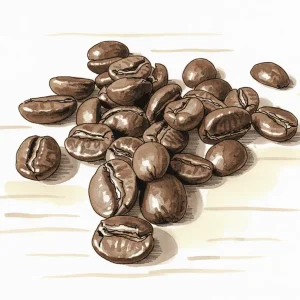Experimental
A powerful fusion of advanced techniques like anaerobic fermentation, carbonic maceration, and yeast enhancement produces astonishing flavors. From fruit-forward punch to wine-like depth, these experimental approaches challenge the traditional coffee world and elevate the entire experience to remarkable new heights.
Experimental Beans
Showing 1–16 of 68 results
De goedkoopste prijzen per 1 kg worden weergegeven
-
AMKA
van Stean’s Beans€ 21,00 -
Argote Anaerobic
€ 57,60 -
Argote Juan Pablo Super Special
€ 273,60 -
Argote Lactic Anaerobic
€ 230,40 -
Argote Mezcla
van Nordkapp Coffee€ 45,80 -
Bill Klinton – Peru – Hybrid Washed – Geisha
€ 3,83 -
Brasil California Love
van Zwarte Roes€ 140,00 -
Brazilië – Fazenda do Salto 250 gr. in ventielzak
van Brandmeester’s€ 45,00 -
Brooklyn
€ 42,56 -
Colombia – Rafael Rojas (direct trade)
van Koffiestation€ 242,80 -
Colombia Algeceria Santa Barbara
€ 26,00 -
Colombia La Kaleidoscope 2.0
-
Colombia La Reserva
€ 90,00 -
Costa Rica
van Sampietro€ 39,95 -
Costa Rica – Don Alexis Natural Thermic Aerobic
€ 60,00
More About Experimental
Introduction to Experimental Processing Methods
Experimentation in coffee processing is no longer a fringe pursuit—it’s a genuine movement in the coffee industry. Producers are applying specialized techniques that go far beyond the usual washed or dry processes. Think extended fermentations in sealed tanks, adding specific yeasts, or even soaking beans in a cascara infusion made from the dried skins of the coffee fruit. The goal is to create bold, unique flavor profiles that can range from wine-like or liquor-like nuances to vibrant tropical fruit overtones.
Anaerobic Fermentation
One key method among these experimental techniques is anaerobic fermentation. By restricting oxygen—usually in tightly sealed containers—microbes and bacteria transform sugars in a low-oxygen environment, generating surprising notes such as deep winey accents or warm spices. It’s a precise operation, as any misstep could result in overly funky or unpleasant ferment flavors.
Carbonic Maceration
Another standout innovation is carbonic maceration, borrowed from the wine world. Instead of stripping cherries of pulp, the whole coffee fruit is commonly placed in a tank filled with carbon dioxide. Under pressure and without oxygen, incredibly bright fruit flavors emerge, sometimes creating a candy-like aroma. Results can span everything from tart red berries and tropical hints to floral bursts that are unusually intense.
Lactic and Yeast Fermentation
Lactic fermentation relies on promoting lactic acid bacteria, which imparts a creamy mouthfeel and a subtle yogurt-like tang. When producers opt for yeast additions—often strains used in wine or beer—carefully chosen organisms highlight floral or exotic fruit aromas. Pineapple, peach, and honey notes can surface, making for an extraordinarily lively cup.
Double Fermentation and Cascara Experiments
Double fermentation, famously associated with Kenya, involves an extra rinse or soaking stage that adds layers of complexity to the beans. Cascara experiments go even further: letting beans soak in a concentrated brew of their own dried skins, creating a tea-like essence with strong dried-fruit undertones. These methods can be labor-intensive but deliver a one-of-a-kind flavor dimension.
Practical Brewing Tips
These experimental coffees often shine in a pour-over setup, like the Hario V60 or Kalita Wave, helping preserve their explosive fruitiness. A slightly lower brew temperature—around 92 °C (198 °F)—keeps bitterness at bay. Pay attention to roast level: lighter roasts accentuate floral or tangy qualities, while medium roasts bring out more sweetness or spicy nuances.
Inspiration from Around the World
Producers in Colombia, Costa Rica, and Ethiopia have enthusiastically embraced these experimental methods, but El Salvador also boasts pioneers like Aida Batlle, who gained recognition for cascara and yeast fermentations. Panama’s Lamastus family is celebrated for Anaerobic Slow Dry (ASD), which uses extra-long drying periods to develop intense tropical fruit flavors. These unique offerings can command impressive prices at auction, highlighting how coveted experimental coffees have become.
Final Thoughts
Experimenting with coffee processing is all about pushing boundaries and uncovering flavor profiles that simply don’t appear in traditional washed or natural coffees. Techniques such as anaerobic fermentation, carbonic maceration, and even double-soak methods can open up a world of possibilities—from wine-like layers of depth to bursting fruitiness. Ultimately, these coffees prove there’s still much to discover and appreciate in the specialty coffee universe.

